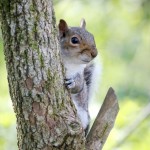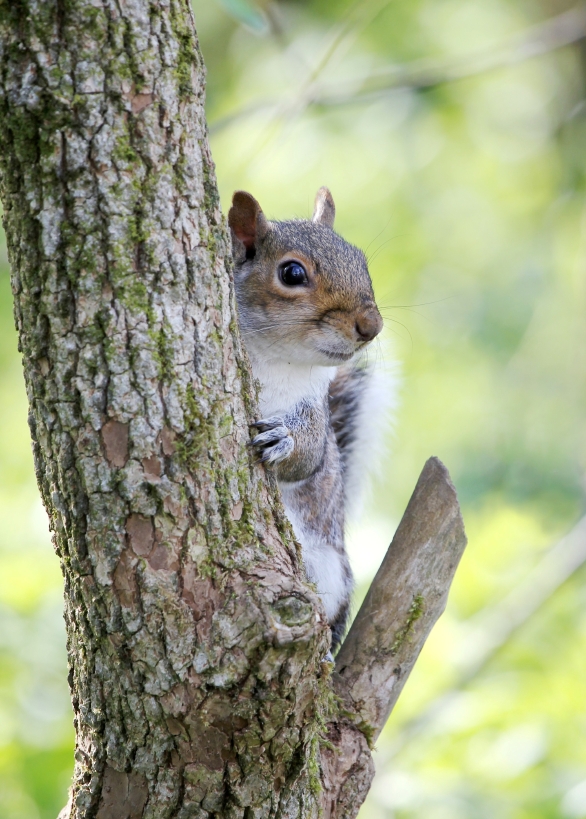 The Greater Hudson Valley has so much to offer in all aspects of life. Our close proximity to New York City holds great appeal to many, as do our incredible scenic surroundings. We are lush with trees and rolling hills, the perfect habitat for our friends, the grey and flying squirrels.
The Greater Hudson Valley has so much to offer in all aspects of life. Our close proximity to New York City holds great appeal to many, as do our incredible scenic surroundings. We are lush with trees and rolling hills, the perfect habitat for our friends, the grey and flying squirrels.
The grey squirrel is abundant in our service area. Whether you live in lower Westchester County or the most northern tip of Columbia County, we all come across dozens of grey squirrels in our daily travels. Grey squirrels are easily identified by their bushy tails, which measure out at half their body length. The bushy tails are used for balance, as a parachute, or to protect the animal from the sun or cold. These little creatures also come in a variety of colors, from different shades of gray, mixed with yellow to reddish brown hues, to black-furred squirrels and albino gray squirrels. Regardless of their color, all grey squirrels have sharp claws, strong legs and measure between 18” to 20” long.
The southern flying squirrel is the most common flying squirrel south of the Mohawk River Valley. They are predominately nocturnal creatures, which makes it difficult to document their abundance. Their coats are a mouse-like gray color and they only weigh about two ounces, making them the smallest species of squirrel in New York State. They have flattened tails and large, dark eyes for night vision. While grey squirrels are known for their bushy tails, flying squirrels are known for their unique ability to glide through the air. They do this by extending their feet, causing the large flaps of skin found along the sides of their bodies to stretch tight, forming a wing-like structure. This act allows them to glide through the air as if they were flying.
Grey Squirrels and flying squirrels have somewhat similar appetites. They both eat seeds, nuts, berries, fresh leaves and flowers, but the flying squirrel also eats small birds and their eggs.
Squirrels In My Attic, Squirrels In My Walls, Squirrels In My Chimney
Squirrels, like any other animal, spend their days trying to care for their basic needs of food and shelter. Most of the time, they are able to obtain this in the context of nature, but when a residential or commercial structure is close to trees and/or there are small holes around dormers, ridge vents, eaves, attic vents, and chimneys the property becomes vulnerable to a squirrel infestation. To be honest, even if there are no holes, if they have access to your residence or commercial property they can chew their way in to any one of the areas referenced above.
Squirrels living in a house or commercial property pose several different risks. Wildlife isn’t as quite as bashful or picky when it comes to the bathroom and they prefer to stick close to their home. Your home then becomes their latrine, leaving behind a foul smell in your residence or commercial property. Squirrels carry ectoparasites, including mites, fleas and ticks. Once they jump off their original host, the squirrel, they will be seeking a new host, perhaps you or one of your customers. But the greatest risk or concern is the fire hazard they create. As mentioned earlier, Squirrels have sharp chisel-like front teeth that continually grow and therefore, they must continually chew to keep them from getting too big. Squirrels, like all rodents chew on electrical wiring. By chewing on wires they strip the plastic coating, which exposes the bare copper wire and creates a very dangerous situation. In addition, their nesting materials may block heating and or duct vents which in turn creates fire risk.
How do I get rid of squirrels?
As the cold months approach you may be thinking about putting out a bird feeder for our feathered friends, but they will not be alone in enjoying the bounty. Squirrels often dominate bird feeders, so consider squirrel proofing it by keeping it at least 10 feet away from surrounding trees and applying a metal mesh around the base of the stand to deter the squirrels from climbing up it. It is also helpful to keep the area under the feeder clean. If you see someone feeding squirrels, persuade them to stop. Squirrels are capable of jumping or gliding long distances from branch to branch or from a branch to your structure so keep branches trimmed up to 10 feet away from your home or commercial property. Make sure that you do not have open gaps/holes at the joints of siding, overhanging eaves, or where pipes and utility lines enter the home. Replace plastic attic vents with metal designs securely attached to the building. You may have considered trapping squirrels, but this is just a temporary solution, as new squirrels will soon come into an area to replace the removed animals. Effective squirrel control comes from a combination of habitat modification or Wildlife Exclusion and human behavior modification, ensuring that we do not offer them easy access to our homes and commercial properties.
We Are On The Patrol & Offer Squirrel Control
If you are experiencing a squirrel infestation and would like to get rid of squirrels and effectively clean-up the mess they have left behind, then give Wildlife Busters a call to experience our professional and human squirrel removal service toll free at 1-855-945-1212.
We offer long-term warranty and prevention plan on all wildlife exclusion services. We provide squirrel removal in Rockland county, squirrel removal in Dutchess County, squirrel removal in Ulster County, squirrel removal in Orange County, squirrel removal in Putnam County, squirrel removal in Westchester County and squirrel removal in Columbia County.
Sizzling Hot Deals for August
As fall approaches and our beautiful wildlife seek shelter, we at Wildlife Busters will be offering discounts on Wildlife Inspections and Exclusion work. WE believe the best way to avoid a human/wildlife conflict is to ensure your residential commercial property is sealed tight. For those of you who have had Raccoons in the attic, or squirrels in the attic or bats in the attic and have had to cover the cost of an attic clean up, you understand how much money a simple Wildlife Inspection followed up by wildlife exclusion techniques would have saved you. Enjoy a 5% savings on wildlife inspections and exclusion worked booked by September 30th. When you schedule your inspection, just reference to our August newsletter to experience the savings.
Community Wildlife Programs and Upcoming Events
Mohonk Preserve
Evening Yoga at the Pavilion
Thursdays in July and August, 6-7:15pm. The Preserve is offering a free, one-month membership for Healthy Ulster Autumn. For more information please visit mohonkpreserve.org
Hudson Highlands Nature Museum.
Close Encounters of Birds of Prey, Saturday, August 11, 5 p.m at the Wildlife Education Center, Pre-paid registration is required. For more information please visit; hhnaturemuseum.org
Weinberg Nature Center
Enjoy the live animal exhibit at Weinberg Nature Center, where you will find a colorful varitey of furry, feathery, scaly, slimy and scaly creatures. Please call in advance for hours of operation 914-722-1289 or visit; weinbergnaturecenter.org
Beczak Environmental Education Center
“Chesapeake Light Craft Demo Day” @ Hudson River beach. Saturday, August 11, 11:00 AM – 4:00 PM, all ages, FREE. And for some Wildlife fun all year round visit: palisadesparksconservancy.org The Bear Mountain Zoo located in the Bear Mountain State Park, NY.


 Receive FREE wildlife Tips!
Receive FREE wildlife Tips!
